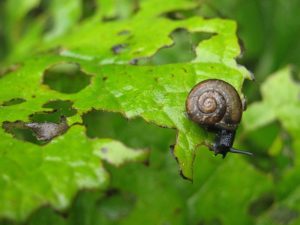
Hello! Last year, in our village, all garden owners suffered from a pest invasion. Cabbage, which was on the verge of destruction, suffered especially.
We tried various ways to protect it, we went and shared successful solutions with each other.
Joint work yielded results - cabbage losses were insignificant. Want to know how to handle cabbage from pests? How to do this without potent chemicals? In the article below I will try to answer these questions in detail.
The content of the article:
Diseases and Pests of Cabbage
Cabbage grows large, beautiful, clean-looking. When you start to clean it, you find that the leaves are covered with a brown coating, as if they watered it all the time with dirty water. It happens that you remove the leaves to the stump, and they are all brown.
This is unfortunately - the diseases and pests of cabbage tried, it happens that the lady-cabbage is not dressed at all in noble attire. For example, in a normally developing head of cabbage, layers of brown and dried leaves are formed.
Dry and hot summers have a negative effect on this, when cabbage experiences a moisture deficit during the setting of a head of cabbage. So, the intensity of the formation of such leaves can reduce systematic watering.
In addition, it is important that the plants receive enough calcium. It is no accident that it is recommended that in the phase of setting a head of cabbage and later, cabbage be fed with a solution of ash - against cabbage diseases (it is rich in calcium) or added to a solution of mullein.
Violation of growing conditions can lead to a cabbage disease such as pinpoint necrosis. It is characterized by the appearance on the leaves of many small, slightly depressed lead-gray or black spots of various shapes.
An imbalance of nutrients in the soil can lead to point necrosis when excessive doses of nitrogen fertilizers are applied and phosphorus, boron and molybdenum are lacking.
Disease - Circular Spotting
Cabbage grew good, but on a number of plants cabbage leaves were in small brown spots, turned yellow and fell off. What is cabbage disease?
It seems that the cabbage was hit by a ring spot. This is a viral disease, which contributes to damp weather. And dampness last summer was abundant. Most likely, the causative agent of the disease brought to you on the bed of aphids growing nearby weeds: quinoa, nightshade and other of their families.
It is not enough to fight cabbage disease with circular spotting, only by removing infected leaves (they should be cut and burned).Preventive measures that prevent the pathogen from entering the garden are much more effective.
To this end, having cut off the heads of cabbage now, all cabbage residues should be removed and burned. But even if you do this, anyway next year for cabbage it is necessary to take a place located away from the current garden. Also try to prevent weeds (they are the reservoir of infection) and aphids that spread the causative agent of cabbage from your area.
It is hardly advisable to leave part of the plants of the current crop as uterine so that in the spring they will be planted in a pound to receive seeds. The mother liquors can become infected and produce seeds that will become a source of infection.
Cabbage usually does not fade from the holes in the leaves, which could be caused by slugs. Apparently, other pests “applied” to this, as they say. Unfortunately, cabbage has a lot of them. Especially tangible damage is caused to her by the tracks of butterflies-whites and cabbage scoops, cabbage moth, white larvae of the cabbage fly, aphids, earthen fleas.
The distribution and well-being of some of them is facilitated by damp weather, which was typical for almost all of June and the first days of July.
Let's start with the holes in the leaves. Along with slugs and snails, such “marks” could leave caterpillars of cabbage scoops, cabbage and turnip caterpillars on them.
So, the brown or green caterpillars of the cabbage scoop in July and even in September penetrate not only the white cabbage, but also the heads of the cauliflower, gnaw passages in them and pollute them with excrement. If there is not much cabbage, the caterpillars can be collected manually, completely clearing the beds from them.
What to treat from aphids, caterpillars, scoops, cabbage moths
But you can treat the cabbage from pests with a solution of bancol, taking it 4 ml per five liters of water. This amount of solution is enough to spray one hundred parts. Bankol will clear cabbage from the caterpillars of the whitewash, scoops and cabbage moth.
You can do it even easier: chop coarsely wormwood and scatter it over the cabbage. Until it dries, butterflies will fly around the cabbage side. Spraying cabbage with infusion of onion husks will also help, as well as simply scattering it on the leaves.
Cabbage pests can be infused with arrows of garlic or onions. It is easy to get rid of slugs by pouring slaked lime, dolomite flour or superphosphate around plants in two or three lines at a distance of 10-15 cm from each other.
Spraying plants with a suspension of mustard (100 g of powder per ten liters of water) serves the same purpose. Pollination of the soil with superphosphate, slaked lime or a mixture of lime and tobacco dust in equal amounts is also effective.
The general health of the cabbage depends on the care of it. Timely weeding, loosening of the soil and hilling of plants are needed. Feeding will also be useful. In such cases, the plants will be able to withstand both diseases and pests of cabbage.
The cabbage was used throughout the summer, and when the heads of cabbage were cut, there was no joy: small cabbage grew, and moreover, it was affected by some pests. Therefore, a lot of waste. What to do? Do not refuse to grow cabbage next year?
Compared to other vegetable plants, cabbage is the most unprotected from pests. It feeds on aphids, cruciferous fleas, bedbugs, leaf beetles, rapeseed beetle, larvae of cabbage flies and moths, cabbage and turnip whites, cabbage moths, rapeseed sawfly and stem cabbage secretive. Therefore, growing it requires, indeed, a lot of attention.
It is necessary to destroy weeds on time, not only in the crops and plantings of cabbage, but also around the entire plot, since aphid eggs winter on cruciferous weeds and caterpillars hide in summer. For the purpose of prevention, marigolds and marigolds should also be planted among cabbage, the smell of which repels many harmful insects.
To deal with a large number of cabbage pests, it is necessary to lure and try to lure natural enemies to your site: trichogram egg eater, ground beetle beetles, ladybugs, tahina fly and eh fly: Nestia, which willingly settle near flowering plants of the umbrella family.
Like the Greek gods, these insects feed on nectar. Most of all, ladybirds, lacewings and other beneficial insects are attracted by the flowers of tansy, caraway seeds, fennel, flowering caps of perennial onions, carrots, dill umbrellas. So it is necessary to "settle" these plants in your garden, setting aside a corner for the flower-nectar conveyor. In arid spring and summer, aphids attack cabbage.
Aphids on cabbage, how to fight?
The simplest remedy against aphids on cabbage is the processing of leaves on the underside with celandine infusion.
It is prepared as follows: a tablespoon of dry grass is poured with a glass of boiling water, infused for 20 minutes, diluted with water in a ratio of 1: 5, after which 10 g of laundry soap is added to the infusion.
Decoctions of red pepper and potato leaves (1: 5), peels of mandarin and lemon, which are previously ground and infused in water for three to five days in a ratio of 1:10, are also effective.
Pests
Something happened to the cabbage: the heads just fell. There were some white thick worms in the stump. Every year I plant cabbage in a new place.
The cabbage fly finds beds both in the former and in the new place - it flies after all. Moreover, its larvae - white worms can infect plants twice: in spring at the seedling stage and in summer - at the end of June-July.
Seedlings of cabbage become lethargic, can die. If it still stands, then with a damaged stem it will no longer be able to develop normally and give a full-headed head out. Larvae, having received their nutrition, become pupae, from which flies of a new generation fly out in two or three weeks.
Summer cabbage fly - the pest lays eggs and harms in the same way as spring. Of course, you cannot forbid a fly to fly. But you can scare her away from cabbage.
For this, for example, it is worth sprinkling the soil around the plants and dusting them with tobacco dust. He does not like this insect and the smell of naphthalene. They say that celery, which has a persistent smell, will also act as a defender. If you inspect the soil and cabbage more often, then the eggs can be seen and destroyed.
Of the insecticides, bazudine (diazinon) is used, the granules of which are superficially applied to the soil at the rate of 20 grams per 10 square meters.
The main cabbage pests and how to deal with them
The problem of how to protect cabbage from pests, worries many gardeners. The control of insects on these vegetables is complicated by the fact that cabbage pests often climb inside the head and hide under the leaves. For this reason, summer residents for a long time may not suspect that their crops are in danger.
Babanukha (cabbage or horseradish leaf beetle): photos and protective measures. Pest of cabbage babanukha (cabbage or horseradish leaf beetle): is a black beetle with a greenish tint and brown paws.
In early June, beetles leave wintering places and begin to eat leaves. Females gnaw holes in the leaves, where they then lay their eggs.
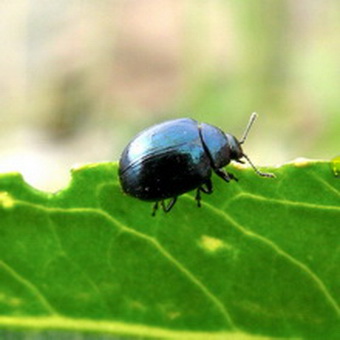
Look at the photo: cabbage leaf beetle can lay up to 400 eggs.
The main measures of protection against babanuhi are the careful removal of all post-harvest plant debris from the beds and timely weed control, especially with wild radish and field mustard. It is necessary to plant seedlings in the early stages. Another way to get rid of these cabbage pests is to dig the soil in the beds in late autumn.
Pests of cabbage and how to deal with them: protection from green baride. This pest is a beetle measuring 3.5-4.5 mm in dark blue color with a greenish tint and a metallic sheen. Thin grooves are located on its elytra, and a smooth midline is visible on the back.
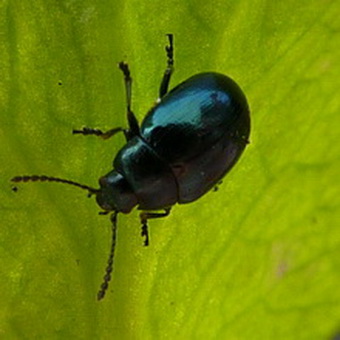
Eggs are white with a matte finish, oval. Their size is 0.6-0.9 mm. The size of the larvae is from 5 to 10 mm.
Wintering of beetles takes place in the soil to a depth of 5 cm, individual individuals can deepen to 8-9 cm. They come out in early spring, when the top layer of the soil warms up to 7-9 ° С. Beetles feed, gnawing holes on the stems, leaves of plants.
Basically, the invasion of this pest affects various varieties of cabbage. Damaged areas of plants turn yellow, over time, growths appear on them. Numerous holes are visible on the leaves.
Damaged by bugs young plants begin to lag behind in growth, and with significant damage they die. In late April - early May, females begin to lay eggs in the pits, which they gnaw in the stems and petioles of the leaves. After 7-10 days, larvae appear on them, which feed on plants, mainly in the stems. Yields are reduced.
With a significant lesion, plant death occurs. After about a month, the larvae pupate. In July - August, beetles appear, which then fly to wintering places.
Cabbage Whitefly Control Measures. The body of an adult usually reaches a length of 1.5-2 mm. Externally, the insects resemble the mole-shaped Lepidoptera. The body of insects is white or yellowish-red in color, dark spots are hardly distinguishable on it.
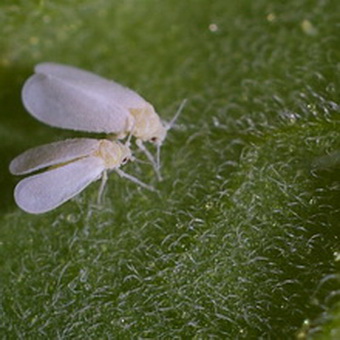
Pay attention to the photo: this cabbage pest has four wings, covered with a white coating. Larvae feed on plant sap, causing the latter to die.
Whitefly larvae on cabbage are usually located on the lower surface of leaves. The sticky substance secreted by them is a nutrient medium for the sooty fungus, so the leaves turn black.
This procedure should be carried out regularly. In addition, traps can be used as measures to control whiteflies on cabbage, and tobacco can be used as bait - the smell of this plant attracts insects. In total, more than 1,500 species of whiteflies are known.
Among the most common - strawberry, cabbage, citrus, tobacco and greenhouse. The latter damages crops grown in greenhouses and greenhouses (cucumbers, tomatoes).
Methods of dealing with spring cabbage flies. This pest is a small gray fly with transparent wings, whose body length is not more than 6 mm. Cabbage fly larvae up to 8 mm long, white.
The main method of controlling spring cabbage flies is spraying plants with burdock infusion. To prepare it, it is necessary to pour 2.5 kg of pre-crushed fresh leaves of burdock 9 l of warm water, leave for 2 days, then strain.
Before spraying cabbage from pests, do not forget to timely remove weeds and all plant debris from the beds after harvesting. It is necessary to dig the soil in the fall. Hilling of cruciferous crops contributes to the formation of additional roots in them, which reduces the harmfulness of the cabbage fly.
How to spray a wavy flea from a pest. This pest is a black beetle with a yellow stripe on each elytra. Its length is about 3 mm. Beetle larvae have three pairs of legs; they themselves are yellow in color with a dark head. Their length reaches 5 mm.
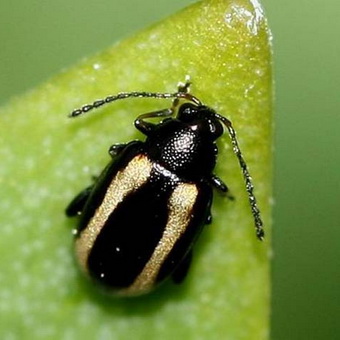
As can be seen in the photo, the cabbage pest wavy flea is in many ways similar to the black flea, it differs only in color and habitat in a wetter environment.
In early spring, a flea emerges from the soil and settles on wild and cultivated cabbage plants. A wavy flea damages radishes, turnips, radishes, turnips, daikon, watercress, cabbage, horseradish.
Females begin to lay eggs on the surface of the soil. After 10 days, larvae appear in them, which live in the soil and feed on small roots of radishes, radishes, turnips, etc.
After 20 days, pupation of the larvae takes place in the soil, and after another 15 days, the second generation of a wavy flea appears.
The summer generation of wavy flea damages canola. The beetles eat round holes on the leaves, leaving the lower skin intact.
Before you fight these cabbage pests, you need to prepare a decoction of tansy. To do this, pour 600-800 g of dried or 2 kg of fresh raw materials from the aboveground parts of the tansy of 10 liters of water, boil for 45 minutes. Cool the broth, let it brew for 2 hours, strain.
How to protect cabbage from a pest gall nematode. One of the main cabbage pests is the gall nematode. This vermiform pest infects many types of vegetables grown in greenhouses and greenhouses. Only nematode resistant garlic and cereal crops.
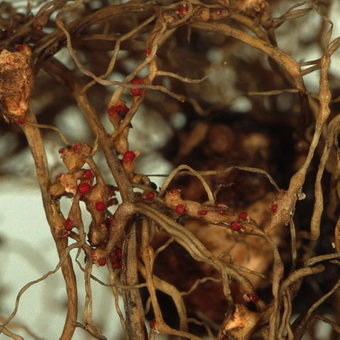
The body length of the gall nematode is 1-1.5 mm. Nematode penetrates the roots of plants and settles in them. In addition, it releases toxic substances that lead to the formation of growths and swellings (galls) on the roots.
Female insects are very prolific. On the roots of cabbage, gall nematodes can be up to several hundred.
To combat the gall nematode, it is recommended to replace the layer of infected soil (50 cm) with healthy. In greenhouses and greenhouses, it is necessary to disinfect the soil with steam.
Fighting cabbage pest in the open ground.
The whites are ubiquitous. Butterflies lay eggs on the underside of plant leaves.Caterpillars that emerge from the eggs feed on these leaves, and then creep into other plants. Most of the leaves of the caterpillar are eaten, only the central veins remain on the plants.
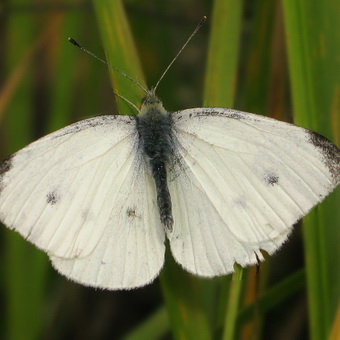
This cabbage pest in the open field slows down the crops in growth, they stop developing, with a strong defeat, the cabbage does not tie out.
To reduce the number of whites it is necessary to attract entomophages (parasites and predators) by planting dill and carrots along the section with cabbage.
How to protect cabbage from pests: measures to combat cabbage moth. This pest is a butterfly, the wingspan of which is 1.5 cm. The front wings are brown, along each of them there is a dark wavy strip. Hind wings narrow, long, dark gray. Caterpillars of cabbage moth about 1 cm long, green, with eight pairs of legs.
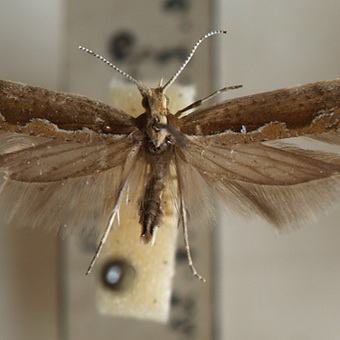
Butterflies fly out in May and begin to lay eggs along the veins on the lower surface of the cabbage leaves.
After a week, caterpillars appear, which bite into the pulp of the sheet, without first damaging its skin. In the leaf tissue, passages form. Then the caterpillars can damage both the inner leaves of the emerging head of cabbage and the apical bud.
To increase the resistance of cabbage to this moth, it is recommended to carry out foliar top dressing with a solution of superphosphate with potassium chloride. The first feeding of cabbage should be carried out if eggs are found on the plants, the second - 3 weeks after the first.
The main control measure against cabbage moths is the timely removal of all post-harvest plant debris from the beds, as well as weeding of cruciferous weeds.
Cabbage fire: photo and pest control. This pest is a butterfly, the wingspan of which reaches 3 cm.
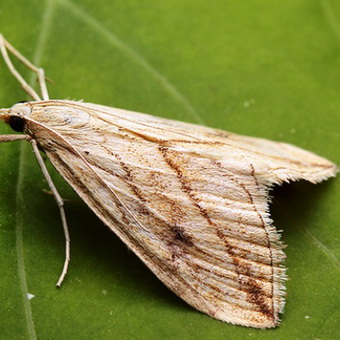
Take a look at the photo: the cabbage moth has front wings brown with dark wavy transverse stripes. The hind wings of the insect are light brown.
Cabbage fire damages radishes, turnips, radishes, turnips, daikon, watercress, horseradish and especially cabbage. Wintering of cabbage moth caterpillars takes place in the soil, and in June butterflies appear.
To combat cabbage moth weeds must be destroyed in a timely manner. In addition, you can catch moths of butterflies, attracting them with light. In autumn, dig the soil in the garden. It is recommended to plant cabbage in the early stages before the departure of moth butterflies.
Pest Treatment: Pest Control. This pest is a butterfly, the wingspan of which reaches 5 cm. The front wings are brown with light transverse stripes. Hind wings are light brown. Caterpillars of cabbage scoops are green, most often with yellow stripes on the sides.
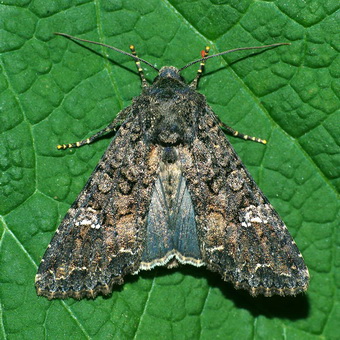
Cabbage scoop damages white, savoy, cauliflower, beets, onions, lettuce, peas.
To combat the cabbage scoop, it is recommended to spray with a decoction of hot pepper. To prepare it, you need 1 kg of fresh or 0.5 kg of dry red pepper, pour 10 liters of water, boil for 1 hour.
In addition, you can spray the plants with a solution of white mustard powder. For its preparation, it is necessary to add 10 g of powder in 1 liter of water, mix, strain. Before spraying, bring 200 ml of the solution to a volume of 1 liter. You can catch butterflies scoops, attracting them with light.
Another way to get rid of these pests on cabbage is to dig the soil in the garden in the fall, and in the summer it is necessary to destroy weeds in a timely manner. It is advisable to plant cabbage in the early stages before the departure of butterflies scoops.
How to get rid of cabbage bug pest. This pest is an insect that damages radishes, turnips, radishes, turnips, daikon, watercress, horseradish and various varieties of cabbage.
Wintering of bugs takes place under fallen leaves and other plant debris. In early July, insects begin to emerge from their wintering sites. Females lay eggs on the stems, leaves and pods of plants.
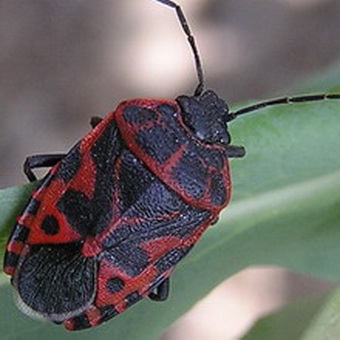
Damaged by cabbage bug plants turn yellow, then spots form on them. Young shoots often die. Ovaries and flowers often fall.
Bitter wormwood planted next to cabbage seedlings protects the culture not only from the cabbage bug, but also from the cabbage fly.
It is necessary to plant seedlings in a timely manner, regularly remove weeds in the garden and all post-harvest plant residues.
Methods of dealing with cabbage pest root crypto. This pest is a dark gray beetle. The length of his body reaches 3 mm. The larvae of the crypto-angler are white, legless, and horseshoe-curved. Wintering of beetles takes place in the foliage of forest trees.
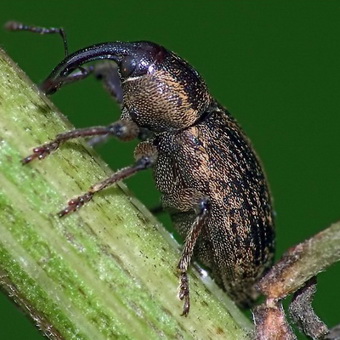
Females lay eggs in the stems of plants, making holes in them. Emerging larvae begin to feed on the stem tissue, advancing to the root. At the same time, swellings (galls) appear on the roots.
On one plant, up to 20 galls are found in which larvae develop. After some time, the larvae pass into the soil, where they pupate.
To combat the cabbage root secretive hunter, it is necessary to fight weeds (especially wild radish, field mustard) in a timely manner, remove all plant debris from the garden. When planting seedlings of cabbage, you should carefully examine its roots and discard plants with galls and growths on the roots.
How to keep cabbage from a pest. This pest is a dark brown beetle, whose length reaches 4 mm. There is a thin long tube on the head of the beetle. The larvae of the crypto-angler are white, legless, and horseshoe-curved. The head of young larvae is black; over time, it turns white.

Rapeseed crypto-beetle beetles and their larvae damage all types of cabbage, especially kohlrabi. Wintering of beetles takes place in the soil at a depth of 6-10 cm.
Females lay eggs on stems under branching. At the same time, damaged stems thicken, growths (galls) develop on them, which then crack.
How to save cabbage from these pests and protect other crops? To combat rapeseed stealthy scavenger, it is recommended to spray the plants with a decoction of capsicum and tansy.
To prepare it, it is necessary to pour 0.5 kg of dry crushed fruits of hot peppers, as well as 100 g of dry crushed tansy grass 10 l of water.
Boil for 1 hour, then let it brew for 1 day, strain.In the resulting broth, dissolve 30 g of laundry soap previously grated on a coarse grater. Processing should be carried out 2-3 times a month with an interval of 10-15 days.
How to get rid of pests on cabbage: the fight against sprout fly. This pest is a small gray fly with transparent wings, whose body length does not exceed 5 mm. Larvae of the germ fly up to 8 mm long, white, transparent.
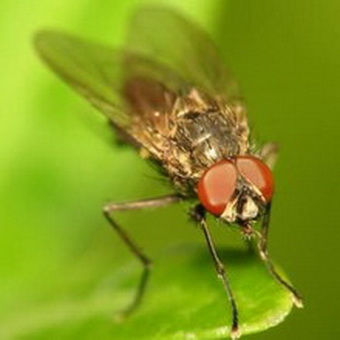
Wintering of false cocoons of a fly takes place in the soil. At the beginning of May flies appear. Females begin to lay eggs in the soil near cabbage crops and other vegetables, especially onions, tomatoes, cucumbers, radishes and beans. After 5 days, larvae of the germ fly appear, which make their way into the pulp of the roots and root crops. Larvae gnaw out moves in root crops.
To combat the sprout fly, it is recommended to dig the soil in the garden in the fall. In addition, it is important to control weeds in a timely manner and remove all plant debris from the beds after harvesting. Particularly carefully, one should dig in the manure introduced into the soil, since it attracts sprout flies.
How to treat plants from cabbage pest scoop-gamma. This pest is a butterfly whose wingspan does not exceed 4.5 cm. Its front wings are dark brown with a whitish pattern in the form of a gamma letter. Hind wings are light brown, framed by a dark border. Caterpillars scoops are green, have 12 pairs of legs.
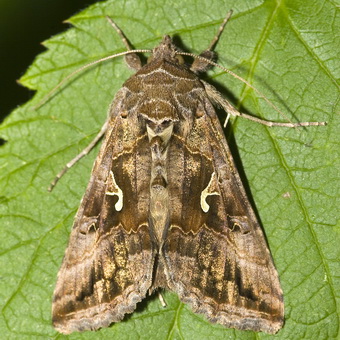
Gamma scoop damages cabbage, kohlrabi, potatoes, tomatoes, beets, carrots, parsley, onions, cucumbers and other vegetable crops.
Petiole mosquito: measures to combat the pest of cabbage. This pest is a small yellow-green insect with transparent wings, whose body length does not exceed 2 mm. Petioles mosquito larvae yellow, flat, narrowed from the front end. They are able to bounce.
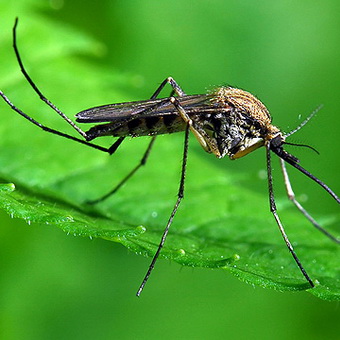
Petiole mosquito damages mainly cabbage, Savoy and cauliflower.
Wintering of petiole mosquito pupae takes place in the soil. In spring, females lay eggs in the apical kidney of cruciferous crops. After 4 days, larvae appear from them, which begin to feed on juice from leaf petioles, and then bite into leaf tissue.
The affected leaves are wrinkled and resemble corrugations, and the leaf petioles thicken and bend. The apical kidney, affected by the petiole mosquito, often dies. In humid, warm weather, the heart of a cabbage can rot.
Especially dangerous petiole mosquito for seedlings of cabbage.
To combat the petiole mosquito, it is recommended that when the pest is massively invaded 2 times a week, the plants should be sprayed with a decoction of wormwood. It is necessary to timely remove weeds and all plant debris after harvesting. In autumn, dig the soil in the garden.
How to process and how to get rid of a black flea on cabbage. This pest is a black beetle whose body length does not exceed 3 mm. Beetle larvae up to 5 mm long, yellow with a dark head, have three pairs of legs.
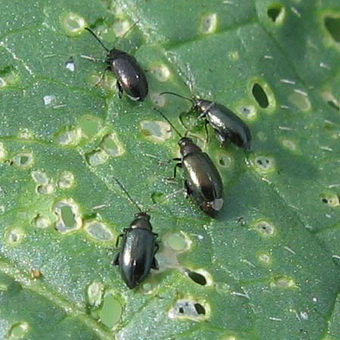
Black flea damages radishes, turnips, radishes, turnips, daikon, watercress, cabbage, horseradish.
In early spring, the flea leaves its shelters and settles on cabbage plants. Females begin to lay eggs on the surface of the soil.
The beetles eat round holes on the leaves, leaving their lower peel intact.
How to get rid of a black flea on cabbage and prevent the spread of pests in the area? To combat insects, it is necessary to regularly loosen the soil around the plants, which will violate the conditions of pupation of the beetle.
There is no effective way to treat cabbage from a black flea, the only way is to periodically remove weeds and rake the fallen leaves in the garden.
Pests of cabbage and effective methods for their destruction
It is not particularly important whether you are growing cabbage in a summer garden or in a winter greenhouse, you will definitely meet crop pests that will interfere with obtaining the desired result.
Cruciferous fleas
Serious damage to these insects is already in the seedling seedling phase. These are small bugs that winter in the soil and survive the winter in plant debris. With the onset of heat, they leave wintering places and eat cruciferous on their way. First, weeds, and then cabbage, which we planted in the ground.
Insects feed on the upper layers of leaf tissue, which is fraught with subtle ulcers on the plant. When seedlings grow up, tears appear on the sites of ulcers.
Massive damage of this kind often leads to wilting seedlings and death of plants. If the attack falls on adult plants, they already have enough strength to survive it and show the crop, albeit worse quality.
How to deal with cruciferous flea on cabbage? To save cabbage from pests, it is necessary to understand that early planting in this case is only good, because by the time the parasites are active, the plants are already more mature and stronger.
In order to prevent insects from destroying the crop, it is necessary to pollinate seedlings with dust. For this, hexachloran (12%) is used in a mixture with DDT, processing is carried out at the rate of 10-15 g per 10 m2.
If there is no dust, you can replace it with other drugs, for example, mix road dust, furnace ash and sodium silicofluoride (1: 1: 1), and carry out processing at the rate of 10 g per 10 m2. The first treatment occurs at the time of the appearance of fleas, then a few more treatments in increments of a week.
Cabbage fly
The insect is very similar to a housefly, although smaller in size. Damages the parasite cauliflower and white cabbage, starting in late May.
At this point, the fly lays eggs directly on the soil near the cabbage or on the root neck of the plant. After 7-10 days, larvae appear from small heaps of eggs, which attack the roots of the culture.
As a result, the root system begins to rot, plant nutritional regimes fail and cabbage dies. The activity of the cabbage fly can be determined by a wilted appearance or by the color of the lower sheet, which becomes a lead color.
How to deal with the cabbage fly. To prevent the insect from harming the cabbage plantings, we need:
- Pollination of plantings with dust, no more than 3-5 g per square meter weekly;
- If cabbage fly larvae are detected, water the culture with a special solution of thiophos (30%), the concentration of which should not exceed 0.03%. The consumption for each plant is about 250 g;
- Water cabbage with chlorophosomes (65%), the concentration of the solution is about 0.15-0.25%, the consumption for the plant is not more than 200 g;
- If there are no such poisons, the soil is sprinkled with mothballs with sand, 1: 7, or lime with tobacco dust (1: 1), not more than 300 g per 10 m2.
Cabbage Moth
This cabbage pest is a small butterfly that starts laying eggs on a cabbage leaf in early June. Each butterfly is capable of producing up to 100 eggs, which are clearly visible on the underside of the leaf in the form of small yellow dots.
The fight against cabbage moth. Fighting cabbage pest like this should be very effective, because during the warm period, the moth gives up to several generations that cause very serious harm. To fight cabbage moth, you should:
- Treat cabbage from pests with calcium arsenate, about 12 g for every 100 m2;
- Spray chlorophosomes (65%), with a solution concentration of about 0.15%, up to 500 mo per 10 m2;
- You can use entobacterin, which is diluted to a solution state of 0.1-0.4% and is used in an amount of 500 ml for every 10 m2.
Cabbage scoop and cabbage whitewash
Belyanka is a large moth with specks of black on the wings. It rages during the day, when it lays eggs on cabbage leaves in quite serious portions, from 30 to 100 pieces at a time. After 1-1.5 weeks, a caterpillar appears, which quickly eats up the flesh of the leaf, leaving only the veins intact.
Fighting the scoop and cabbage whitewash. Protection of cabbage from pests occurs in the same ways as from cabbage moth. You can use the same means, at the same standards, and you will get an excellent result and save the cabbage crop.
Cabbage aphid
Cabbage aphid is a fairly small parasite, grayish-white in color with a kind of waxy coating. In spring, with the first serious warmth, the aphids are ready to appear in whole colonies, but aphids can suck juice from cabbage, thereby killing it, by mid-summer.
Methods of dealing with cabbage aphids. Processing cabbage from pests is as follows:
- A solution of anabazine sulfate 0.2% is prepared, the treatment takes place in the amount of 500 ml per 10 m2;
- If there are no chemicals, you can use folk remedies for pests - a decoction of tobacco leaves. To do this, 400 g of tobacco is boiled for 2 hours in 2 liters of water. Further, when the broth cools down, the leaves are drained, and the liquid is poured into a bucket of water, 40-60 g of soap are added and processing is carried out.
How to destroy cabbage aphids without harm to the future harvest of cabbage? The pests of white cabbage and cauliflower are serious parasitic insects that are ready to destroy your crop at any time, so get ready to fight in advance and learn all the methods.
Effective cabbage pest treatment products
To effectively protect cabbage from pests, it is necessary, first of all, to remove plant residues after harvesting and weeds surrounding the garden. Weeds are best removed systematically, preventing their seeding.
The remains of the crop must be removed, because pupae of cabbage whites, cabbage moths and other pests can remain on the stumps and leaves of cabbage plants, they can damage plants next year.
Shoots of cabbage plants in the open ground and seedlings themselves are damaged by cabbage fleas, which winter in the adult beetle stage under the remains of plants and after wintering feed on weeds, then transfer to cultivated plants.
The first way to treat cabbage from pests: to control cabbage fleas, pollinate plants with tobacco dust, better than shaggy, or sifted ash, better mixed with pyrethrum (3: 1).
To protect plants from damage by cabbage keel, a second cabbage treatment agent is used: before planting seedlings, a glass of lime milk is poured into the hole (800 g of lime per 10 liters of water).
All species of caterpillars are destroyed by the biological product Entobacterin (20 g per 10 liters of water), but the treatment of cabbage from pests will be effective only at a temperature of at least 16 ° C.The required amount of the drug is first poured with a small amount of water at a temperature of 12-15 ° C.
A good remedy for cabbage pests is three-fold foliar feeding of plants with a solution of superphosphate (100 g per 10 l of water) and potassium chloride (50 g per 10 l of water), carried out for the first time when clutches of eggs of white cabbage appear (bright yellow), the second time - when clutches of cabbage moths appear (almost white, which then darken) and a third time when aphids appear.
The death of aphids, as well as young caterpillars, occurs from a lack of nitrogen nutrition (nitrogen passes into protein substances). The same effect has wood ash (a glass of 10 liters of cold water), infused for a day with stirring.
An effective and environmentally friendly way to control cabbage pests is to attract large flies, spirits, which are somewhat similar to wasps. They lay eggs among colonies of aphids, and each larva destroys them up to 400 aphids.
Also, as an agent against pests of cabbage, cabbage whites under industrial conditions breed trichogram oviparous, and against aphids - lacewings (flelernits). They can be seen when aphids appear: in appearance they look like small dragonflies of a light green color.
They lay oval greenish eggs on long and thin transparent stems on the underside of the leaves among the aphid colonies, larvae with three pairs of legs emerge from the eggs, which begin to exterminate the aphids in 1-2 hours.
The scourge of cabbage plants is a cabbage fly. Her laying eggs in the ground near the stem coincides with the flowering of birch, cherry, lilac. White cabbage eggs. An environmentally friendly remedy for the pest of cabbage, cabbage flies, raking eggs from cabbage, so they die.
When hatching larvae of the cabbage fly, it is effective to process the cabbage from the pest: pour a glass of a solution of malathion or chlorophos under each plant (20-30 g per 10 l of water).
Pests of cabbage and how to handle them
The question - how to protect cabbage from pests - is asked by many breeders and gardeners.
Many do not even suspect that this vegetable crop in the garden is already infected, since many cabbage eaters are hiding inside the head of the cabbage and / or under the leaves, so you should be prepared in advance to deal with pests of cabbage.
Slug
These are the fastest growing vegetable parasites. They are known to all gardeners and breeders. They easily infect cabbage, turnips, carrots, parsley, pumpkin, zucchini, eggplant and other plants. Very often you can observe them on young plants and seedlings.
The life span of a slug reaches several years. Within one season, the female produces several generations. The body of slugs is very flexible. You can overcome them with a solution of bitter pepper or use various food lures.
Medvedka
Also this pest is also called cabbage. Medvedka is a large insect, which in length can be more than six centimeters. At first glance, it looks a bit like cancer.
The back is dirty brown in color, the belly has a yellowish tint and is covered with thick, small hairs. Kapustyanka uses its front paws to dig the ground.
This pest is very common in Russia and in Europe.For its saturation, it eats the roots and stems of various plants, seeds and numerous root crops. Usually lives underground.
It is very difficult to overcome the bear, but it is possible if you carefully water the soil with a solution of 0.3% chlorophos. Another effective way to deal with this gluttonous insect is to use a bait consisting of a mixture of crops along with chlorophos.
Chemistry processing
Not only folk remedies and methods are used to treat and protect white cabbage, but also chemical ones. Unfortunately, large areas of this crop cannot be processed manually or when immediate pest control is needed. The most popular chemicals are:
- Fury
- Kemifos;
- Spark - M;
- Bankol and others.
In shops and markets you can find other, as well as very good chemicals for the treatment of cabbage. They should be bred strictly according to the instructions that are indicated on the package.
Not a single house can live without this unique product. We hope that this article will be an excellent instruction that will protect your garden from harmful parasites.
leave a comment